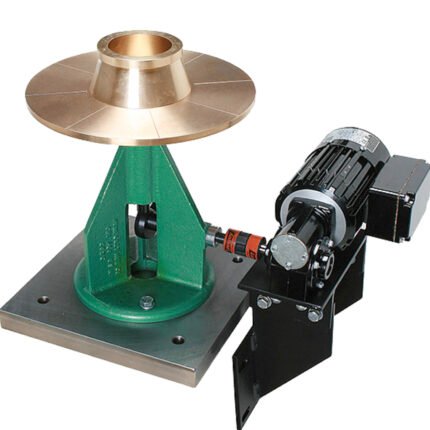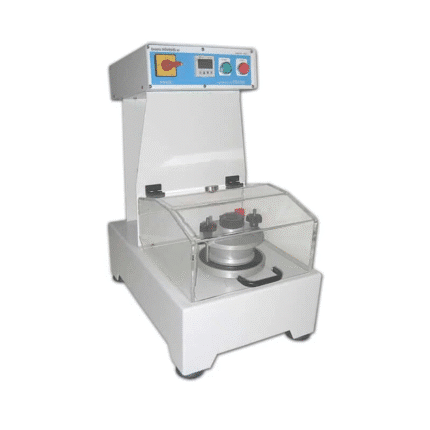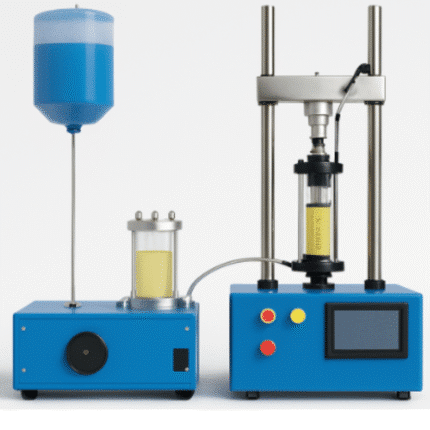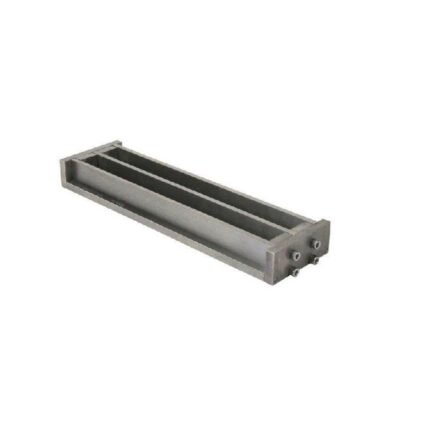AZA 0791 FLOW TABLE
- Tests flow and workability of fresh concrete/mortar
- Rigid brass or steel table with drop mechanism
- Conforms to IS 1199 and ASTM C230 standards
- Ideal for site QC and construction material labs
- Supplied with mould and hand-operated handle
Description
Flow Table is a standardized laboratory device used to measure the workability and consistency of fresh cement mortar or concrete. It assesses the material’s flow by observing how it spreads upon repeated drops of a metal table. This simple but critical test helps evaluate how easily a concrete or mortar mix can be placed and compacted — which is essential for both structural performance and ease of application.
The Flow Table test is widely used in construction sites, cement testing labs, and civil engineering quality control departments. It is especially relevant for mixes where high flowability is required, such as flooring, grouting, or self-leveling concrete.
The apparatus complies with IS 1199:1959 – Methods of Sampling and Analysis of Concrete and ASTM C230/C230M – Standard Specification for Flow Table for Use in Tests of Hydraulic Cement, ensuring it meets all major industry requirements for standardized testing.
Key Components:
-
Flow Table Surface: Usually 762 mm (30 inches) in diameter, made of rigid brass or stainless steel, polished for minimal friction.
-
Drop Mechanism: Allows vertical drops of 12.5 mm to 25 mm using a cam-action or lever system.
-
Mould: A conical frustum, generally 100 mm high, used to shape the fresh mix.
-
Handle or Lever: Manual operation handle to lift and drop the table at defined intervals.
Testing Procedure:
-
A fresh mortar or concrete sample is placed in the flow mould positioned at the center of the table.
-
The mould is filled in layers and then lifted vertically.
-
The table is dropped 15–25 times using the handle, and the spread diameter is measured.
-
The difference in initial and final spread gives a quantitative measure of flowability.
This test is crucial for determining whether a mix can properly fill formwork, embed reinforcement, and compact under its own weight. It’s particularly useful for self-compacting concrete, micro-concrete, and highly fluid mortars.
Advantages of Using Flow Table:
-
Rapid assessment of consistency and workability
-
Non-destructive and easy to repeat
-
No power source required — fully manual
-
Provides visual and dimensional verification of flow characteristics
-
Portable and durable for lab and field use
Applications:
-
Concrete product manufacturing
-
On-site inspection during concrete placement
-
Admixture effectiveness testing
-
Precast concrete quality assurance
-
Civil engineering educational demonstrations
The Flow Table plays a vital role in identifying performance differences between mortar mixes and adjusting water-cement ratios or admixture dosages. Its simplicity makes it a favorite even in field conditions, especially where precision in mortar placement is required for repair and overlay works.
Specifications:
| Parameter | Specification |
|---|---|
| Table Diameter | 762 mm (30 inches) |
| Table Material | Brass, stainless steel, or mild steel |
| Table Drop Height | 12.5 mm to 25 mm |
| Mould Dimensions | 100 mm height × 100 mm top × 200 mm bottom |
| Mould Material | Cast aluminum or steel |
| No. of Drops | Typically 25 drops per test cycle |
| Operating Mechanism | Manual lever-operated cam |
| Standards Compliance | IS 1199:1959, ASTM C230 |
| Surface Finish | Polished and rust-resistant |
Frequently Asked Questions (FAQ):
Q1: What does the Flow Table measure?
It measures the spread (in mm) of fresh mortar or concrete, giving an indicator of its flowability and workability.
Q2: Is this test applicable to both concrete and mortar?
Yes. While primarily used for cement mortar, the table can be used with lightweight or self-compacting concrete mixes as well.
Q3: Which standards govern this equipment?
The equipment complies with IS 1199:1959 and ASTM C230, both of which define dimensions and testing procedures.
Q4: How many drops are used in a standard test?
The standard procedure usually involves 25 drops, unless specified otherwise by a testing method or standard.
Q5: Can the table be used without the flow mould?
The flow mould is essential to standardize the initial shape and volume of the sample — using the table without it will invalidate the test.
Additional information
| Table Diameter |
762 mm (30 inches) |
|---|---|
| Table Material |
Brass, stainless steel, or mild steel |
| Table Drop Height |
12.5 mm to 25 mm |
| Mould Dimensions |
100 mm height × 100 mm top × 200 mm bottom |
You may also like…
Abrasion Testing Machine for Glazed Tiles (AZA 1261)
Abrasion Testing Machine for Glazed Tiles (AZA 1262)
ABS Braking System Training Board Simulator (Model AZA1245)
Advanced Triaxial Test System (UU–CU–CD Capable) (AZA 1296)
- UU–CU–CD test modes for complete soil strength profiling
- Automated control of pressure, load, and drainage
- Compatible with clay, silt, sand, and mixed soils
- Integrated data acquisition and real-time graphing
- Meets ASTM D2850, D4767, BS1377, AASHTO standards
- Ideal for geotechnical, research, and academic use
Air Bag Trainer (Model AZA1246)
Alternator Trainer (Model AZA1247)
Related products
AZA 0788 VICAT NEEDLE APPARATUS WITH DASHPOT
AZA 0793 FLOW TABLE
AZA 0795 LE CHATELIER MOULD
AZA 0797 SHRINKAGE BAR MOULD
AZA 0802 DIGITAL BLAINE AIR PERMEABILITY APPARATUS
- Digital model for precise fineness testing
- Measures surface area in cm²/g (1500–6000 range)
- Complies with IS 4031 Part 2 and ASTM C204
- Built-in vacuum pump with digital timer
- Ideal for cement QC, R&D, and educational labs
- Includes calibration certificate & accessories

 Rock
Rock Aggregate
Aggregate Cement
Cement Concrete
Concrete Soil
Soil Steel
Steel Bitumen/Asphalt
Bitumen/Asphalt Security Survey Equipment
Security Survey Equipment General Items
General Items
















